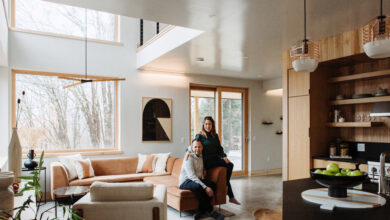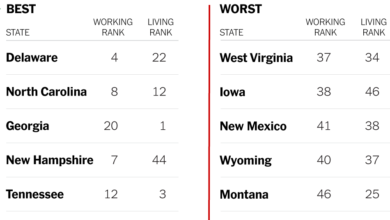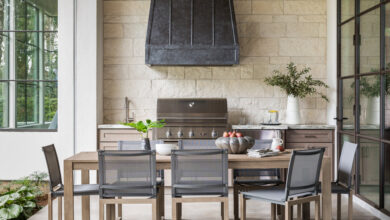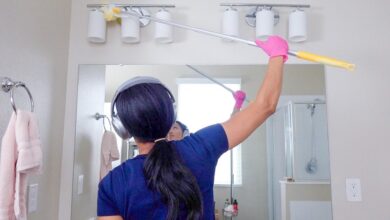Catskill, N.Y.: A Place Where ‘People Are Jazzed About Making Art’
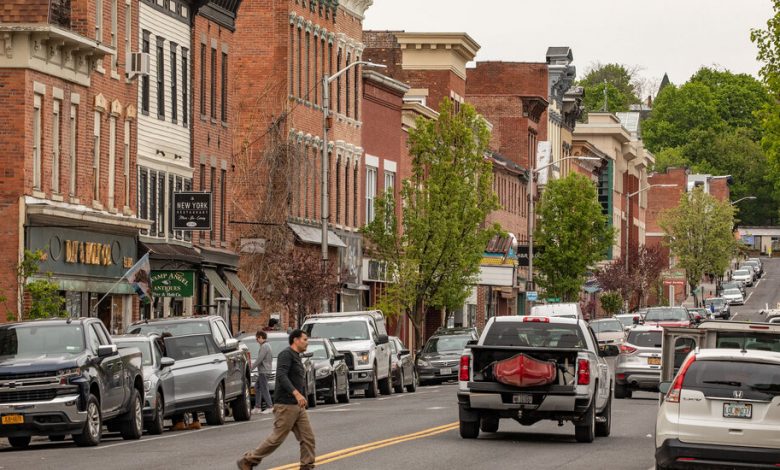
[ad_1]
Rob Spillman and Elissa Schappell closed on their Catskill, N.Y., house, an 1840s farmhouse on 6.4 acres, in the middle of an ice storm in February. “We had to keep stopping to get the ice off the windshield wipers,” said Mr. Spillman, 57, a literary consultant and freelance writer who founded the now-defunct literary magazine “Tin House” with Ms. Schappell.
The couple, who had shared a brownstone in Park Slope, Brooklyn, with another couple for 23 years, paid $825,000 for their new home in Catskill — $25,000 below the listing price — and managed to avoid one of the bidding wars that have become the norm in much of the Hudson Valley. (They offered all cash to sweeten the deal, with plans to seek financing after the sale.)
Two days after their move, they were planning dinner parties at their 3,300-square-foot house. “A lot of our creative friends are already in this area,” Mr. Spillman said. “We sold half of a brownstone for $1.825 million — a million more than we paid for this — and we have so much more space.”
Catskill is a place where “people are jazzed about making art and invested in creating a culture that isn’t a microcosm of New York City, but its own thing,” said Ms. Schappell, 58. “The prospect of being part of such a community and all the possibilities it presents — new ways of thinking, new ways of seeing the world and living in it — it’s a reason to get lit up.”
The couple are among an influx of New Yorkers discovering how much further their money goes in this town of just over 11,000 residents, without sacrificing access to culture. Once home to the 19th-century landscape painter Thomas Cole, the founder of the Hudson River School art movement, Catskill has long been a hub for artists and musicians. But two recent investments totaling more than $20 million have enhanced its reputation as an incubator of the arts: Foreland, an 85,000-square-foot visual-arts campus in three 19th-century mill buildings that opened last August, and the Lumberyard Center for Film and Performing Arts, a 20,000-square-foot nonprofit performing-arts center that opened in 2018 at a former lumberyard site.
Foreland’s founder, Stef Halmos, an artist, chose Catskill for the project because it’s an “unpretentious and friendly” place, she said. “Lovable weirdos, artists, farmers, business owners and everyone in between are on equal footing in this town, which is an unusual and endearing quality.”
After Ben Fain moved to Catskill from Fort Greene, Brooklyn, in 2016, he was so taken with the town’s potential that he invested more than $4 million, buying 10 buildings on Main Street, including a defunct movie theater that he hopes to reopen as an art-house cinema and music venue. His plan includes two adjacent net-zero buildings that will house a boutique hotel called Mr. Cat; the hotel’s bar, restaurant and event space will be in a third building. Left Bank Ciders, a brewery and bar, and C. Cassis, a liqueur distillery, currently occupy another of Mr. Fain’s buildings.
“I remember walking around the village and feeling such a strong sense of community,” said Mr. Fain, a sculptor who has also rehabilitated buildings in New York City. “I felt like I had an opportunity to be a part of what was already happening on Main Street and bring some life back into these buildings.”
Although real estate prices have risen sharply in Catskill in recent years, homes are generally more affordable than those in areas to the south like Woodstock, Kingston and New Paltz. And they are much more affordable than those in Catskill’s more celebrated neighbor to the east, Hudson.
“My clients say they want Woodstock or Saugerties,” said Deirdre Day, an agent with Taft Street Realty who worked with Mr. Spillman and Ms. Schappell. “I often say, ‘If you take that money up to Catskill, you’re going to get something much, much better.’ What Elissa and Rob got in Catskill would have cost so much more in Ulster County.”
What You’ll Find
In the three-square-mile village at the heart of the 60-square-mile town, the architecture is a mix of styles. On the outskirts of the town, buyers can find large farmhouses on multiple acres — a testament to the small family farms that once dotted the landscape — as well as former inns and boardinghouses.
On Main Street, new businesses include a cafe-gallery-gift-shop cheekily named Citiot; two breweries with taprooms, Crossroads Brewing Company and Subversive Malting + Brewing; Left Bank Ciders, which makes small-batch cider from local apples; Mermaid Cafe, with farm-to-table tacos and ramen; and the 25-room Mr. Cat hotel, slated to open in January 2023.
Other new hotels in Catskill include Camptown, a motel getting a $12 million makeover as a year-round resort, and Treetopia, a 42-acre campground transformed into upscale lodgings with Airstream trailers, luxury cottages and glamping tents.
Liam and Laura Singer moved to Catskill from Long Island City, Queens, in 2016, and opened the popular Catskill cafe HiLo the following year. “One of the things we loved about Catskill was the artistic energy,” said Mr. Singer, 40, a musician. In 2019, the couple added Avalon Lounge, a retro-style nightclub with live acts and dance parties Wednesday through Sunday.
What You’ll Pay
The median price of a single-family home in Catskill has jumped 77 percent over the past five years, although the number of transactions has dipped slightly because of limited inventory. In 2021, the median price of the 73 single-family homes sold in Catskill was $265,000, compared with $150,000 for the 75 sold in 2017, according to the Columbia Greene Board of Realtors. In 2020, the median price of the 71 houses sold in Catskill was $215,000. The dramatic growth has continued in 2022, with 19 houses selling for a median of $344,500 in the first five months of the year.
Even so, Catskill homes remain affordable by Hudson Valley standards. By comparison, the median price of a single-family home in Hudson in 2021 was $400,000.
Catskill homes also are being snapped up more quickly. In 2019, the average number of days a home spent on the market was 118; last year, that figure dropped to 50.
Low inventory is an issue across the Hudson Valley. Between 2019 and 2021, the number of Hudson Valley homes listed for sale declined by 52 percent, to 5,657 from 11,777, according to the nonprofit research group Hudson Valley Pattern for Progress. As of mid-May, Zillow showed 21 listings for single-family homes in Catskill, ranging from $154,900 for a two-bedroom cottage in the village to $7.495 million for a six-bedroom estate on 17 acres with Hudson River frontage.
The typical Catskill property tax bill is about $4,700 in the town and $6,800 in the village, according to the town assessor’s office.
The Vibe
The sense of community that struck Mr. Fain is palpable in a town where everyone seems to know everyone else. “You can’t be anonymous,” he said. “That’s one of my favorite things about Catskill.”
Every Thursday evening from spring to fall, Left Bank Ciders hosts a market run by Nimble Roots Farm. “It’s become this community evening,” said Dave Snyder, a partner at Left Bank Ciders. “It’s a ton of fun.”
Residents also gather in the town center for the annual Cat’n Around Catskill, which is like New York City’s CowParade, but with cats. From Memorial Day through Labor Day, some 50 fiberglass cat sculptures pop up along Main Street, and the event culminates with a gala and auction benefiting the Heart of Catskill Association and its efforts to revitalize the business district, which is listed in the National Register of Historic Places.
The Schools
The Catskill Central School District serves about 1,350 students in kindergarten through 12th grade, according to the New York State Department of Education. The district is 66 percent white, 14 percent Hispanic, 12 percent multiracial, 7 percent Black and 1 percent Asian or Pacific Islander.
On 2018-19 state tests, 87 percent of Catskill Senior High School students were proficient in English, 67 percent were proficient in algebra and 88 percent were proficient in geometry, compared with 84 percent, 71 percent and 70 percent statewide.
The high school’s graduation rate in 2021 was 94 percent, compared with 86 percent for the state.
The Commute
Catskill is about a five-minute drive from Exit 21 on the New York State Thruway and less than two hours from the George Washington Bridge, depending on traffic.
Commuters can catch the Amtrak train in Hudson, a 10-minute drive from the village of Catskill. Round-trip tickets to New York City cost $62 to $148, depending on when the ticket is bought and whether it is for peak or off-peak hours. A monthly train pass is $1,008. A six-month parking pass is $650, and an annual parking pass is $1,000.
Trailways offers limited bus service to New York City, with one departure a day from the Exit 21 park-and-ride lot and lengthy layovers in Kingston. The fare is $76 round trip.
The History
The New York State Legislature formed the town of Catskill in 1788 and Greene County in 1800. As the region gained renown for its resorts, steamboats brought tourists to stay at the fashionable Prospect Park Hotel in Catskill, according to a history compiled by the Catskill Community Center.
Thomas Cole first visited Catskill in 1825 on a sketching trip, said Jonathan Palmer, archivist at the Vedder Research Library and deputy Greene County historian at the Greene County Historical Society. Cole later made Catskill his permanent home, and his house is now a tourist attraction called the Thomas Cole National Historic Site.
For weekly email updates on residential real estate news, sign up here. Follow us on Twitter: @nytrealestate.
[ad_2]
Source link


